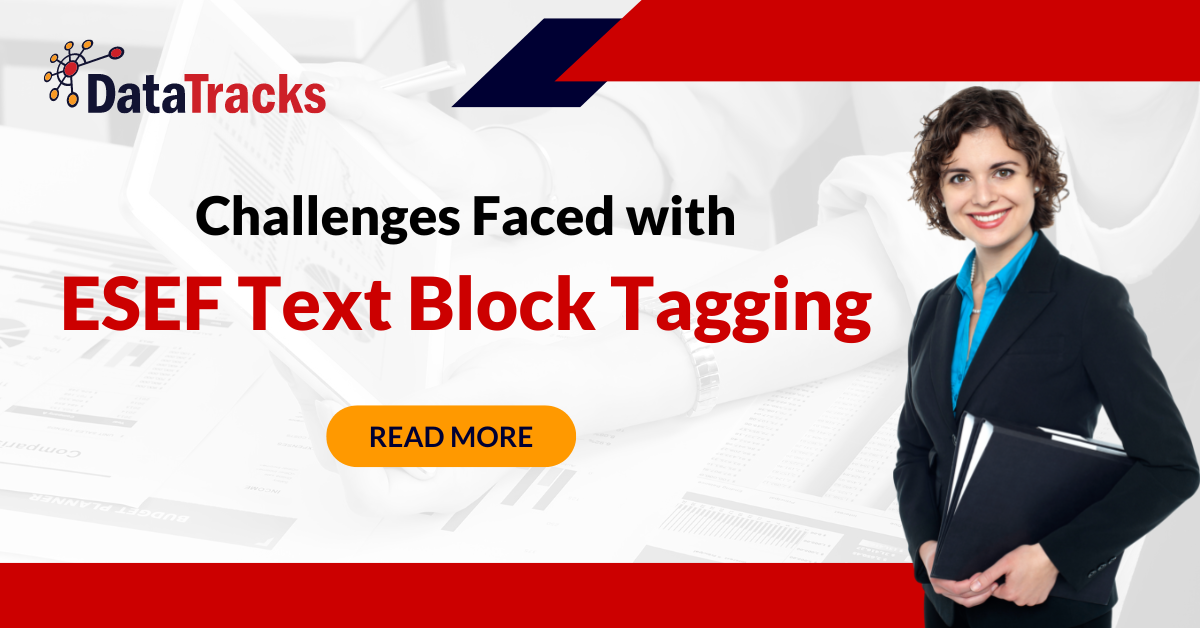ESEF Reporting and Tagging: Best Practices for Ensuring Compliance in 2024
Integrating different data sources into an annual ESMA filing that complies with regulations presents two major challenges: accuracy and uniformity. This project is challenging because of the numerous teams involved, the intricate regulatory constraints, and the enormous volumes of financial data. While accuracy depends on accurate figures, disclosures, and strict reporting guidelines, consistency requires coordinating disparate financial data across departments and subsidiaries.
Understanding ESEF Reporting and Tagging
The European Single Electronic Format (ESEF) is a standardised way for companies listed on European Union (EU) regulated markets to prepare their annual financial reports. Consider the ESEF taxonomy as a uniform language that helps interpret and compare financial data. This makes it easier for regulators and investors to understand the specifics.
ESEF Block tagging, on the other hand, is the process of applying structured tags to financial information to arrange financial data under the ESEF taxonomy. Reports with a consistent structure for financial data will be easier to read, access, and compare.
Moreover, issuers are required by the ESEF mandate to “block tag” the notes to their financial statement, which involves tagging the content of a whole report section to the relevant ESEF taxonomy element.
Techniques for 2024 ESEF Reporting Success
ESEF is at the forefront of the digital transformation of financial reporting, rapidly changing how financial information is shared and analysed. As we approach 2024, companies need to be well-prepared to ensure compliance. Here, we will explore nine ESEF compliance insights and best practices crucial for navigating the financial reporting terrain.
Tip 1: Start Early
Begin your ESEF compliance journey sooner rather than later. Treating it as an ongoing process helps you grasp the rules, assess their impact, and smoothly implement necessary changes.
Tip 2: Use Inline XBRL
Think of Inline XBRL as a user-friendly way to present financial information. It integrates financial statements and tags, making the process more straightforward. Invest in tools supporting inline XBRL to make your reporting process more efficient.
Tip 3: Check for Errors
Before submitting, run your report through a validator. This helps identify errors, warnings, and calculation issues.
Tip 4: Ensure Data Accuracy
Maintain accurate and consistent data. Inaccuracies can lead to compliance problems and affect stakeholder trust. Use automated tools for error detection and conduct regular audits to fix discrepancies promptly.
Tip 5: Plan Well
ESEF compliance can be time-consuming—factor in extra time for auditing and designing the annual report. Working with external experts can help manage time constraints and ensure a smooth compliance process.
Tip 6: Collaborate Across Departments
ESEF compliance isn’t just for finance teams. Involve IT, legal, and communication teams. Establish cross-functional teams and open communication for a holistic approach.
Tip 7: Arrange Your ESEF Zip Package Right
The ZIP file you submit needs to follow specific guidelines. Ensure it aligns with ESMA guidelines, or your document might be rejected. Properly structure and format the contents to ensure automatic discovery by XBRL software.
Tip 8: Stay Informed and Adapt
Regulations change, so stay updated. Engage with regulatory bodies and industry networks. Cultivate adaptability within your organisation to respond quickly to evolving compliance standards.
Tip 9: Test Before Submission
Before your actual submission, conduct a test filing. This helps you understand the regulator’s requirements, identify any prerequisites, and avoid last-minute surprises. Aim for the test filing at least three days before the actual submission.
Conclusion
Data Tracks’ cloud-based solution revolutionises ESEF reporting by offering seamless automation. At DataTracks, regulatory reporting services and solutions guarantee total security, flexibility, quality, and dependability. By utilising our strong and trustworthy solutions, you may create error-free regulatory reports on time and with little effort. For more queries, mail us at enquiry@datatracks.eu or call +31 20 225 3702


